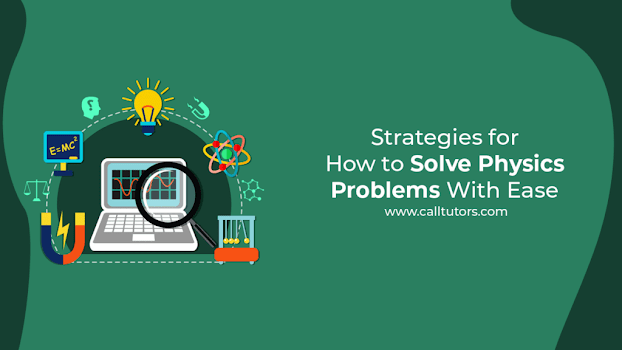Two parameters can help you improve your physics problem-solving skills. To begin, one must comprehend and master the fundamentals of physics. Second, one should devise a strategy for applying these notions to a variety of situations in which physics is relevant. Students discuss their questions about how to handle physics challenges in these situations. Many students say they comprehend the material but can't figure out how to answer the physics issues. If this is true for others as well, they may need to work on their problem-solving skills. Students can benefit from having a strategy in place to develop those skills. Let’s start a discussion on How to Solve Physics Problems.
One can learn how to tackle physics problems by studying how to play a musical instrument or drive a car. What can help students more than anything else is to have a complete approach that is tailored to the unique challenge they are facing. Students can use a variety of gadgets or methods with different physics sections, but the overall strategy remains the same. Students may have a variety of problem-solving skills and practices from previous chemistry, physics, or mathematics classes. Any specific methods, like distinct domains of knowledge and experience, maybe beneficial, and any may check the growth in determining how to tackle physics difficulties.
As a result, be aware of these new techniques, be prepared to investigate new ideas, and abandon outdated procedures that slow down intelligence. Students will notice that as they develop as physics query solvers, the method will become second nature to them. Learners will begin doing these aspects in a methodical manner to command you to develop an efficient response to the query.
Physicists' strategies for solving difficulties
#1: Concentrate on the problem.
Normally, when students encounter a physics problem statement, they must imagine the actions that must be done and the data that must be collected. Learners must describe an image and display any data offered.
Make a subjective representation of the query condition first.
After that, draw a literal, rough graphic that explains the necessary items, their proposal, and their businesses. One thing, for example, could be linked to a different rope in cooperation.
Make a list of all the info you've found. Do not consider choosing algebraic figures for precise amounts at this time.
#2: Describe the physics.
A query's "physics information" modifies the offered data and creates an accurate perspective of an idealized picture by determining variables that can be used to calculate desired amounts. In a thought, one transforms the current situation into an idealized one in which physics laws can be applied. The most significant shortcoming of source physics problems is the inability to apply physics laws, i.e., record equations, prior to initiating a qualitative analysis of the inquiry. One can quickly become a more effective issue solver if they can maintain the attractiveness to see the equations early in their problem-solving.
#3: Make a plan for the solution.
Take some time to develop a plan before students begin working on calculating a result. When the rules of physics are expressed as an equation expression, the comparison is usually universal and broad. Students must construct certain algebraic equations in order to find the target variable.
#4: Put the plans into action
Now it's time to put the strategy into action.
Using an outline, apply the algebra to the given situation.
If you're ready, you'll need a private equation with the goal variable divided among you and just identified measures on the other side.
In the last equation, change the conditions (quantities with units).
Remember that units are logical and that others can correctly cancel them.
Finally, calculate the statistical result for the point variable (s). Ascertain that the final answer is accessible to those who can estimate a solution.
#5: Make a list of viable solutions.
Finally, students can evaluate their responses in terms of how to solve physics problems. This could be beneficial if students used traditional thinking about how the physical world works. These aspects of the physical world can also be observed in a physics lecture.
Conclusion
To wrap up this article, we've discussed a variety of approaches to solving physics difficulties. We've included the top five strategies to assist pupils in solving physics difficulties. Aside from that, a variety of topics may perplex you, necessitating the clarification of the topic's concepts. This will assist pupils in recognizing problems and determining the best solution. As a result, apply a variety of ways to tackle a problem effectively and precisely. Get the greatest physics assistance available online.







0 Comments